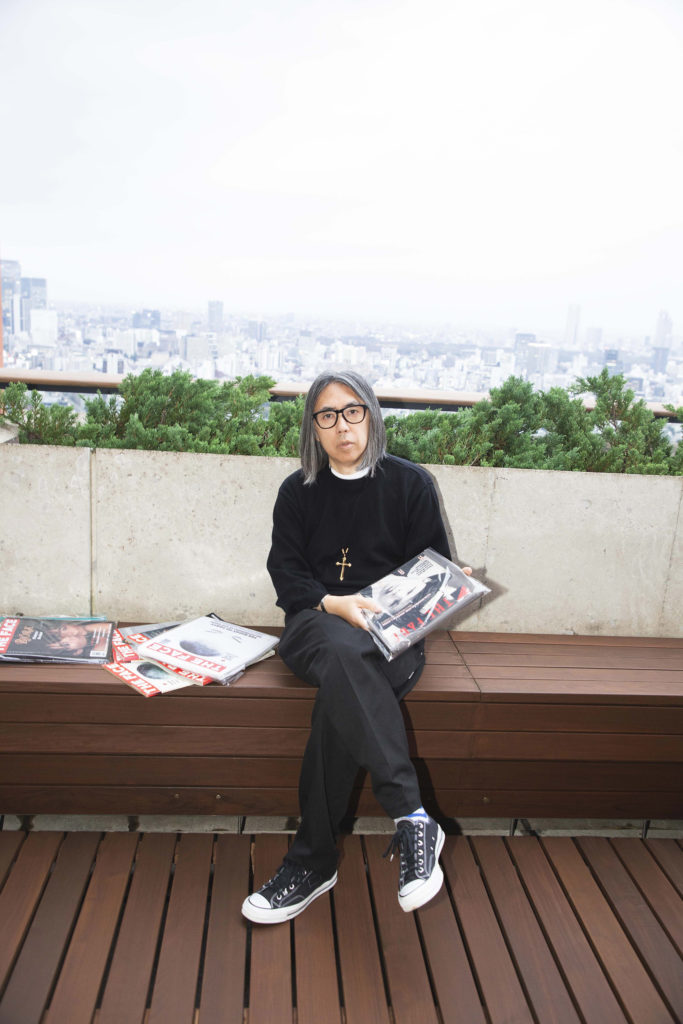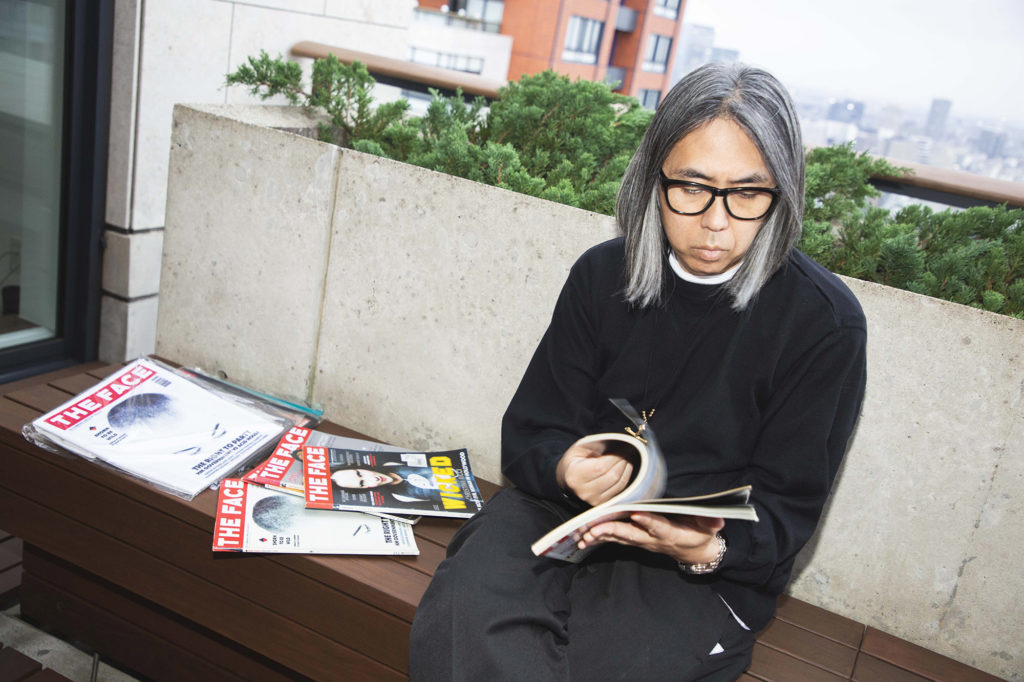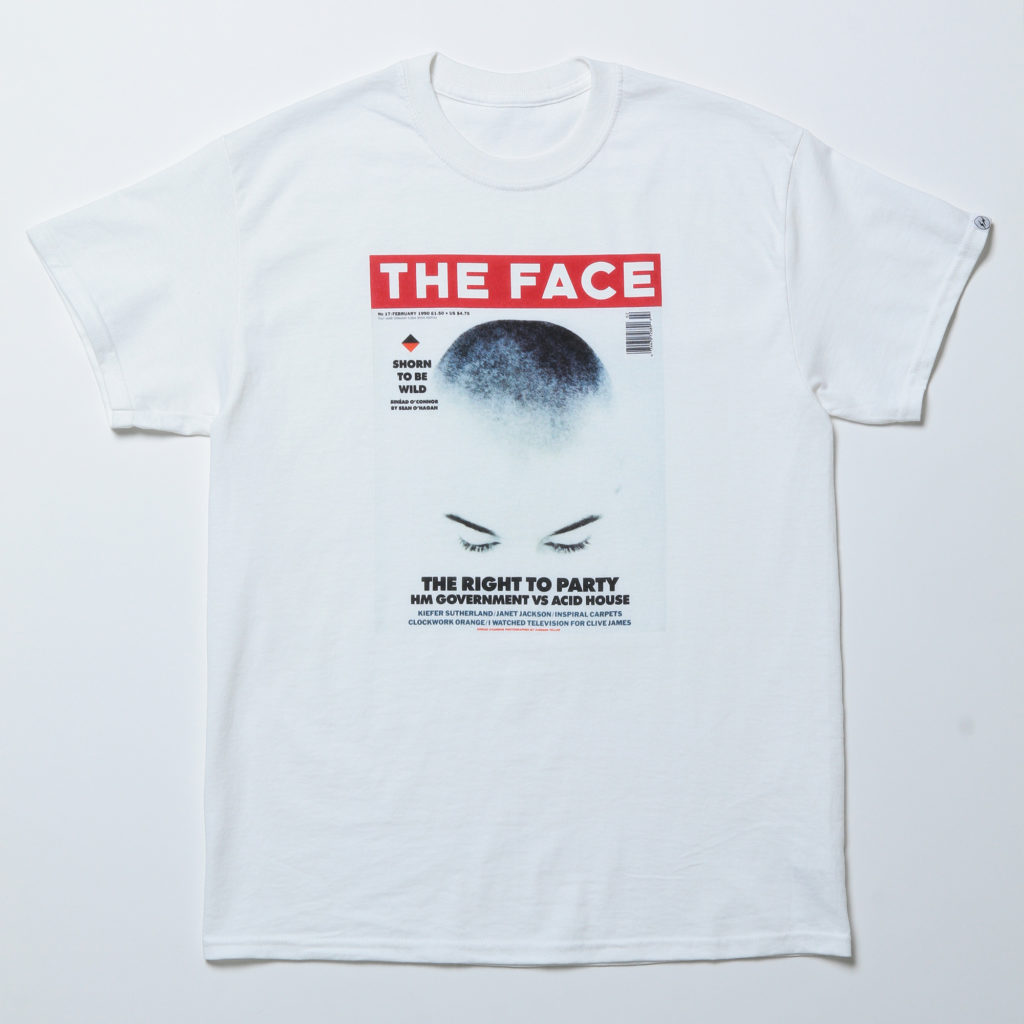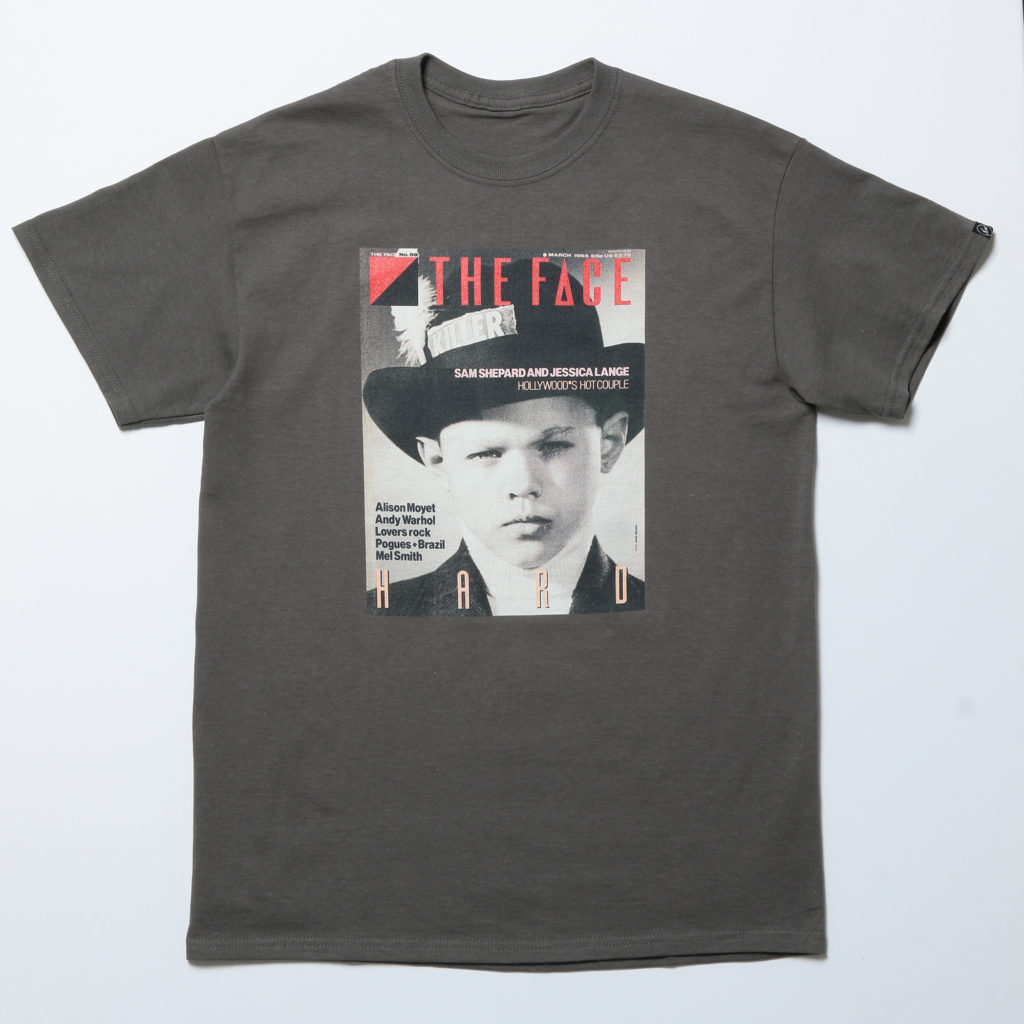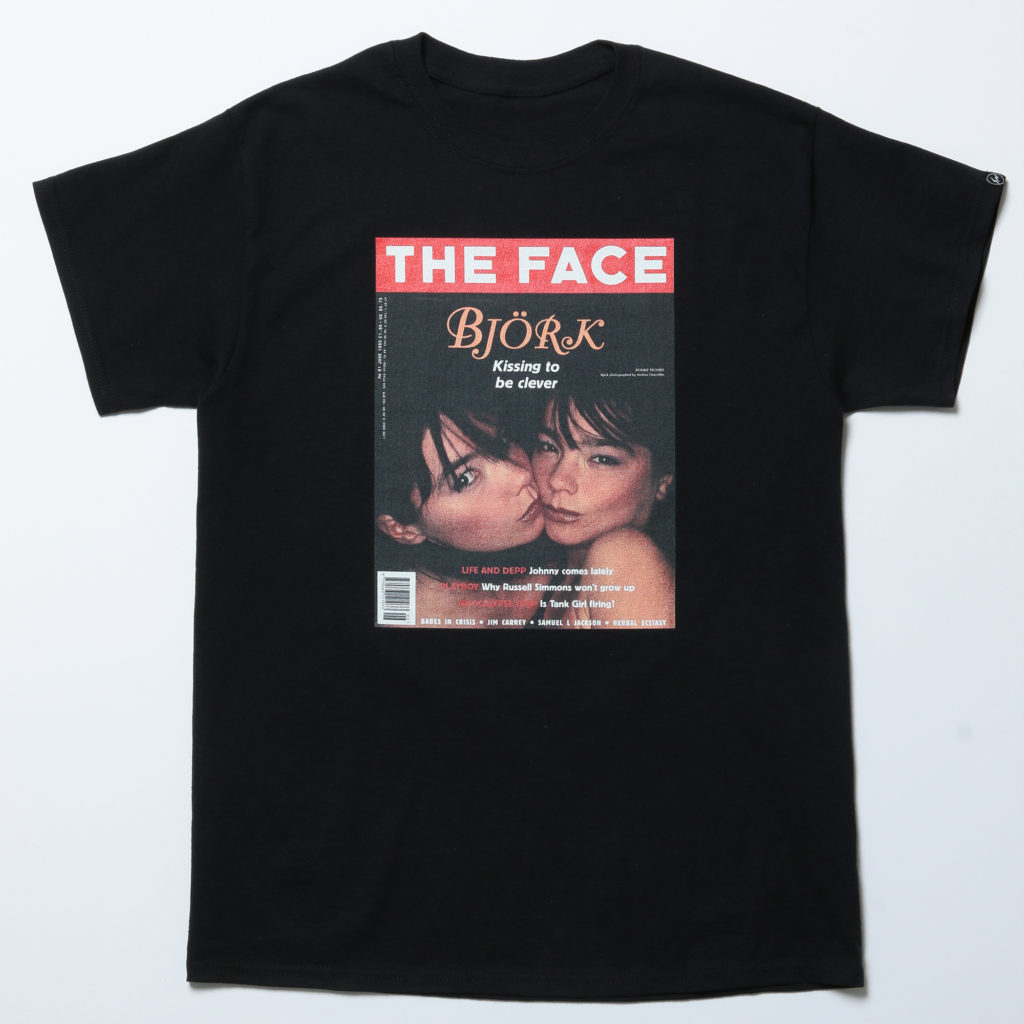The Face, a British culture magazine born in 1980, covered a range of cultural topics from music to fashion, transcending borders between the established and the underground. With a sleek editorial design, it featured color photos that vividly portrayed the cultural scene.
Now, about 40 years since Hiroshi Fujiwara first encountered The Face, he’s being reunited with it. And this time, it’s through a collaboration between his creative brand, fragment design, and The Face. The collection will be available for purchase on the online store of British shop Selfridges from December 1st, as well as TOKION’s online store and TOKiON the STORE in Miyashita park from December 12th. In anticipation of this collaboration, I asked Hiroshi Fujiwara about how he first came across The Face, his experiences in London, and the background behind the collaboration.
The Face was the first magazine to fuse everything from fashion to music.
When did you first come across The Face?
Hiroshi Fujiwara: Around when it first came out. They had it at the clothing and record stores I would go to. At the time, I was going through a phase where I was basically only interested in stuff coming out of London.
What was your first impression of The Face?
Fujiwara: That there was finally a quality magazine in color. RECORD MIRROR was also in color, but it mainly focused on music, and it was a tabloid. There weren’t any other magazines with color photos of indie pop stars, so I can vividly remember when I first laid eyes on The Face. I was fascinated by the fact that it covered a range of cultural topics from music to fashion, spanning across the established and the underground. I thought, “This is my dream magazine.”
The Face featured people I liked at the time, like Vivienne [Westwood] and Malcolm [McLaren], and had a lot of covers with artists I liked, like [Bow Wow Wow]. So I was completely engrossed in reading it.
What other magazines were you reading at the time?
Fujiwara: I was reading the music magazine New Musical Express, and also Japanese magazines like POPEYE and an-an. It was a time when the only way to get information was through books, so I would go to the bookstore nearly every day. Maybe that was the only way to have fun.
Until then, music and fashion magazines were separate entities, so there weren’t any magazines that mixed music and fashion like The Face did. Maybe they still don’t exist.
In the ‘80s, there was no internet, so magazines were the only way to access youth culture. What did The Face mean to you and other young people of your generation?
Fujiwara: For me, it was the only way I could find out about what was happening overseas. Like, what was happening with punk overseas. I would follow everything through Japanese music magazines, but for example, I think the first time I ever saw a clear color photo of Bow Wow Wow was in The Face.
In the ‘80s, information was slow and the possibilities were endless
What part of British music, fashion, and subculture were you into in the ‘80s?
Fujiwara: I was into it all equally. I can’t really think of it separately like only music, or only fashion. I’ve liked England since I was a middle schooler, and the first thing that I liked on my own was punk. With punk, fashion and music come hand in hand, and that was also what appealed to me most. Before that, I listened to The Beatles, but I felt like it was the kind of music that “good kids” listened to. Later, I looked it up and found out that in their early days, the Beatles were rebellious—but punk bands like The Sex Pistols were the first to make me feel that rebellious spirit back then.
Punk was a fusion of fashion and music, just like The Face.
Fujiwara: Punk was the first to do that, which was why it was sensational. These days, it’s no longer a thing that people can’t separate music and fashion. No one dresses like Lady Gaga. (laughs) Most artists just wear fashion that already exists, right? But maybe in hip hop, fashion and music are still fused together. People want to wear clothes like Travis [Scott], and so on.
Why do you think music and fashion was so inseparable back then?
Fujiwara: Because in the ‘80s, there was still the possibility of creating something new. These days, nothing is new. There’s no need for it. Back then, I feel like new things were being created one after another.
So it was a totally different time from today’s information overload.
Fujiwara: It was totally different, and information was slow in a good way. If something new came out, it took about a year for it to gradually gain traction, and the time something spent underground was longer than it is today. And by the time we caught up to something, it had already gone in a different direction.
Today, information gets to us quickly, so things become popular in an instant. And then they disappear right away.
Fujiwara: Right. But I’m just saying that’s how things used to be, not that it’s good or bad. At the time, fashion and music were cutting-edge and interesting, but I don’t know if it’s the same today. Maybe innovation in medicine or technology, or video games, are more interesting today. I guess there weren’t even video games back them.
On Buffalo, the legendary creative collective that worked with The Face
Is there anything that your work and The Face have in common? The Face covers culture as a whole, and your work defies genres. I feel like there are some things in common.
Fujiwara: People say that today, but at the time, it was obvious that music and fashion would be connected. A magazine like The Face came out of the fact that fashion and music coexisted in the streets.
With this collaboration, how did it feel to work with the magazine you’d always admired?
Fujiwara: To put it simply, I was happy. It was fun to choose the covers too.
Are there any covers you chose this time that you have special memories attached to?
Fujiwara: This cover featuring Sinead O’Connor, shot by Juergen Teller. My friend John Maybury directed Sinead O’Connor’s music video for “Nothing Compares 2 U.” When I first went to London in 1982, John gave me a place to stay.
I heard that when you were 18 in 1982, you spent two months in London. What was London like at the time?
Fujiwara: Music and fashion culture were getting really big. I was truly lucky to be able to experience London during that period.
Before you visited London for the first time, were you reading The Face to get your imagination going?
Fujiwara: Yeah. Although when I actually went, some things were different from what I’d imagined. For example, it wasn’t all beautiful women who looked like models. (laughs) Or when I went to a club, I thought they’d be playing singles from the UK charts, but they were just playing regular disco from New York. And sometimes there’d be people there who were dressed sort of punk.
At the time, were you dressed head-to-toe in Seditionaries-esque clothing?
Fujiwara: I was, but in London at the time, that style had just gone out, so maybe people were thinking, “I didn’t know there were Japanese kids who dressed like that.” Maybe because of that, everyone was nice and talked to me. I was never in any danger. In London at the time, there was a rule, or I guess a culture, of sharing with each other, so people were sharing rooms or sharing taxis with strangers on the way home from the club. At the club, there were people from all over England dressed in weird clothing, and there was a feeling of solidarity in being minorities. I was part of that too.
In ‘80s London, were you influenced most by Malcolm McLaren? Was there anyone else?
Fujiwara: My biggest influence may have been Malcolm, but this collective called Buffalo was also cool. It was led by a stylist named Ray Petri, and Barry Kamen and Jamie Morgan were also part of it. Kate [Moss] and Naomi [Campbell] were also friends of Buffalo. At the time, the people in Buffalo all wore black MA-1s, and we called them “Buffalo jackets.” I wore a Buffalo jacket too. And my shoes were Dr. Martens.
Ray unfortunately passed away, but he was stylish. I still remember the March 1985 edition of The Face that he styled.
When you look at The Face covers you selected, how do you feel?
Fujiwara: They haven’t lost their freshness, or I guess, they’re still refined. Maybe there’s a lot a graphic designer could learn from it. I think I was also really influenced by The Face without even realizing.
Depth is what makes fashion and music so interesting
You’re a fashion designer, musician, and producer. Do those different areas of your work influence each other?
Fujiwara: I would like them to. But I don’t know if they actually do. These days, they’re considered completely separate. Personally, I want people who listen to Travis to wear Nikes. Or if they listen to Billie Eilish, they could incorporate even just a little bit of green. I want to imagine some kind of [link between music and fashion].
So you want music and fashion to come as a pair.
Fujiwara: But these days, everything becomes mainstream in an instant, so I guess there are a lot of people who just take things as they come. There’s no depth. I think there are a lot of people who listen to music without being aware of what kind of shoes the artist is wearing. In our day, we would really get to the bottom of what kind of clothes the artists we liked wore, or what kind of stuff they liked. There wasn’t a lot of information, so it was natural to do that.
The current state of information is different. Do you want young people today to know about what it was like in the time of The Face?
Fujiwara: Yeah. There’s part of me that wants to tell them that everything had depth, and that’s actually what’s interesting. If you’re interested in something, you should be willing to dig into it. But there are creators who purposely hide their true nature. So people who don’t pick up on things will just pass over art on a superficial level. But isn’t it fun to notice something on your own? I feel that way—it’s more fun if the people who pay attention notice things about my work and enjoy it.
So The Face was a magazine that let you feel that depth.
Fujiwara: It truly was, and I think The Face also taught me how great independent stuff is. The Face can put unknown models and famous superstars side by side. Even pop stars can become cooler by being in an independent magazine. There are people who would be happy to be in The Face even if there was no money involved. That’s also what’s cool about it. I think The Face was a role model for independent magazines.
Hiroshi Fujiwara
Fujiwara is a musician, producer, and chairman of fragment design. In 1980, he started out as a club DJ. Later on, he began to expand his work as a musician while simultaneously beginning a career in fashion with his unique style and aesthetic sense. Through his brand fragment design, he is a genre-defying creative director.
Instagram:@fujiwarahiroshi
*
The collaboration between fragment design x The Face will be available for online purchase at British shop Selfridges and TOKION, as well as at TOKiON the STORE in Miyashita park.
・Selfridges online store (Available from December 1st)
https://www.selfridges.com/
・TOKION online store(Available from December 12th)
https://estore.tokion.jp/collections/all

